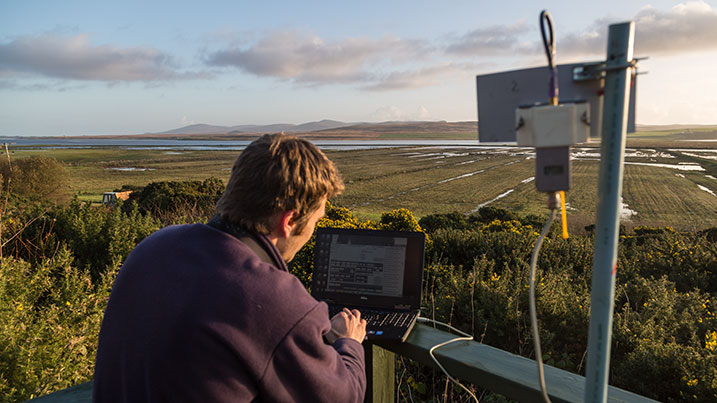The development and miniaturisation of electronic tracking technologies has revolutionised the study of wildlife in the last 25 years, and new advances are continually being made: it is an exciting time to be a conservation scientist.

WWT is a leader in the use of tracking technology to support wildlife conservation. We have deployed various radio- satellite- and GPS devices on species ranging from the tiny spoon-billed sandpiper to the (relatively) enormous whooper Swan. We work closely with the companies to develop devices that can provide ever more detailed information. We are also aware that deploying tracking devices can be risky for the birds. We strive to minimise the impacts on the birds we catch and track, and we only use the devices where there is a clear conservation need.
The latest tags can provide information not just on where the bird is anywhere on earth, but can also provide extraordinary insights into their behaviour, and the amount of energy they are expending. We use the data to understand when and where birds migrate to, sometimes discovering unknown breeding or staging sites. We can determine the risks they face en route. We can understand the habitats they prefer, and the times of the year when they are working hardest. We can even reconstruct the events of the breeding season when it happens thousands of miles away on the Greenland tundra!
Projects
- Bewick’s swan
- Common scoter
- Greenland white-fronted goose
- Pink-footed goose
- Common cranes
- Spoon-billed sandpipers
- Taiga bean goose
-
In this section
- Saving species
- Tracking and technologies
- Habitat creation and management
- Science
- Wildlife health
- Health and wellbeing
- Monitoring
- Engagement and learning